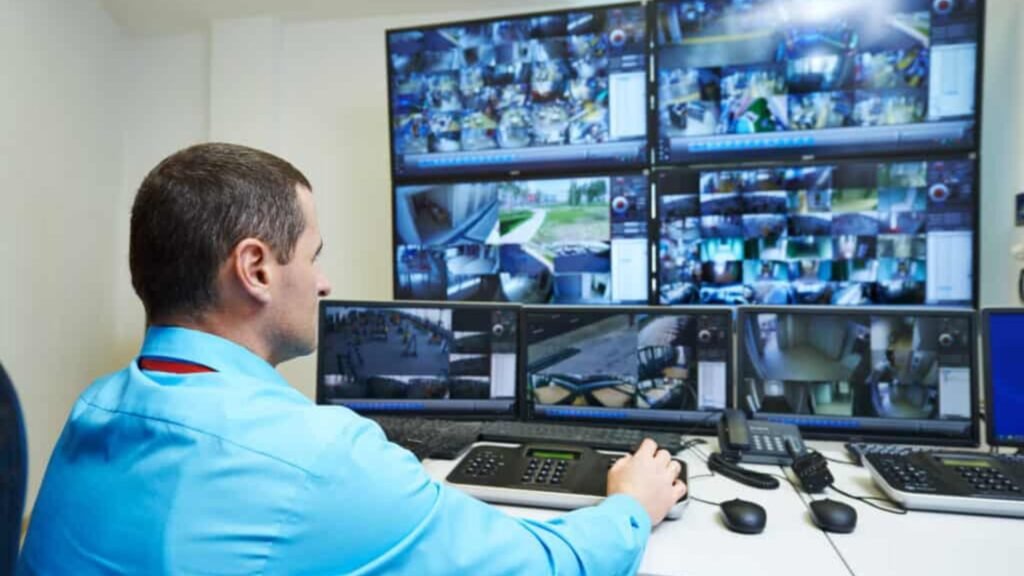How Technology is Enhancing Security
Technology plays a crucial role in enhancing security across various sectors, from personal safety to national defense. Innovations in security technology are making it easier to protect information, assets, and people. In this article, we’ll explore how technology is improving security and the key advancements that are shaping this field.

Advances in Cybersecurity
Cybersecurity technology is essential for protecting digital information from unauthorized access and attacks. As cyber threats become more sophisticated, technology is evolving to keep pace.
- Key Cybersecurity Technologies:
- Encryption: Encryption algorithms protect data by converting it into unreadable code, ensuring that only authorized users can access it.
- Firewalls: Firewalls monitor and control incoming and outgoing network traffic based on predetermined security rules.
- Intrusion Detection Systems (IDS): IDSs monitor network traffic for suspicious activities and potential threats.
Biometrics for Personal Security
Biometric technology uses unique physical traits to verify identity, providing a secure way to access systems and devices.
- Popular Biometric Technologies:
- Fingerprint Scanners: Fingerprint recognition systems identify individuals based on their unique fingerprint patterns.
- Facial Recognition: Cameras and software analyze facial features to authenticate users or identify individuals.
- Iris Scanners: Iris recognition uses the unique patterns in the iris to verify identity with high accuracy.
Smart Home Security Systems
Smart home technology enhances residential security by integrating various devices into a cohesive system that can be monitored and controlled remotely.
- Features of Smart Home Security:
- Smart Cameras: Surveillance cameras with live streaming and motion detection capabilities provide real-time monitoring.
- Smart Locks: Keyless entry systems allow homeowners to control access to their homes using smartphones or key fobs.
- Alarm Systems: Connected alarm systems send alerts and notifications if unusual activity is detected.
Advanced Surveillance Technology
Modern surveillance technology offers advanced features for monitoring and analyzing security threats.
- Surveillance Innovations:
- HD and 4K Cameras: High-definition cameras provide clear and detailed video footage for better identification and monitoring.
- Pan-Tilt-Zoom (PTZ) Cameras: PTZ cameras can be remotely controlled to move, zoom, and focus on specific areas of interest.
- AI-Enhanced Analytics: Artificial intelligence helps analyze video footage to detect unusual behavior and improve threat detection.
Secure Communication Systems
Technology is improving the security of communication channels, ensuring that sensitive information remains confidential.
- Secure Communication Tools:
- Encrypted Messaging Apps: Apps like Signal and WhatsApp use end-to-end encryption to protect messages from being intercepted.
- Secure VoIP: Voice over Internet Protocol (VoIP) systems with encryption prevent eavesdropping on phone calls.
- Virtual Private Networks (VPNs): VPNs create a secure connection between users and the internet, protecting data from unauthorized access.
Cloud Security
As more data is stored in the cloud, ensuring its security is paramount. Cloud security technologies protect data from breaches and unauthorized access.
- Cloud Security Measures:
- Multi-Factor Authentication (MFA): MFA requires users to provide multiple forms of verification before accessing cloud services.
- Access Controls: Cloud security systems manage and restrict access to data based on user roles and permissions.
Physical Security Enhancements
Technology is also improving physical security by integrating advanced systems into buildings and facilities.
- Physical Security Innovations:
- Access Control Systems: Systems that use keycards, biometrics, or PIN codes to control access to restricted areas.
- Smart Lighting: Automated lighting systems that can deter intruders by simulating occupancy or responding to motion.
- Perimeter Security: Technologies like motion sensors and infrared barriers enhance security around the perimeter of a property.
The Role of Artificial Intelligence (AI)
Artificial Intelligence (AI) is enhancing security by analyzing large amounts of data and identifying potential threats more effectively.
- AI Applications in Security:
- Threat Detection: AI algorithms analyze patterns and anomalies to detect potential security threats and breaches.
- Automated Responses: AI systems can trigger automated responses to security incidents, such as locking doors or alerting authorities.
- Predictive Analytics: AI helps predict and prevent security incidents by analyzing historical data and identifying trends.
Challenges and Considerations
While technology improves security, it also presents challenges that need to be addressed.
- Challenges:
- Privacy Concerns: Balancing security with individual privacy rights is crucial in implementing surveillance and data collection technologies.
- Cybersecurity Threats: As security technology advances, so do the techniques used by cybercriminals.
- Implementation Costs: High costs of advanced security systems can be a barrier for some individuals and organizations.
Conclusion
Technology is significantly enhancing security by providing advanced solutions for protecting digital information, personal safety, and physical assets. From cybersecurity and biometric systems to smart home security and AI-driven threat detection, these innovations are making our world safer and more secure. As technology continues to evolve, it will play an increasingly important role in safeguarding against threats and ensuring our security.



